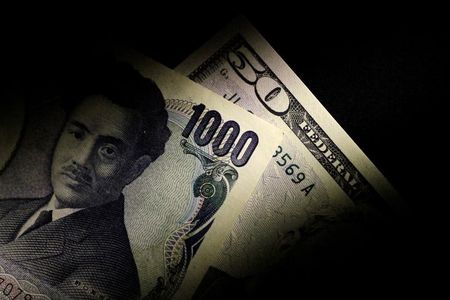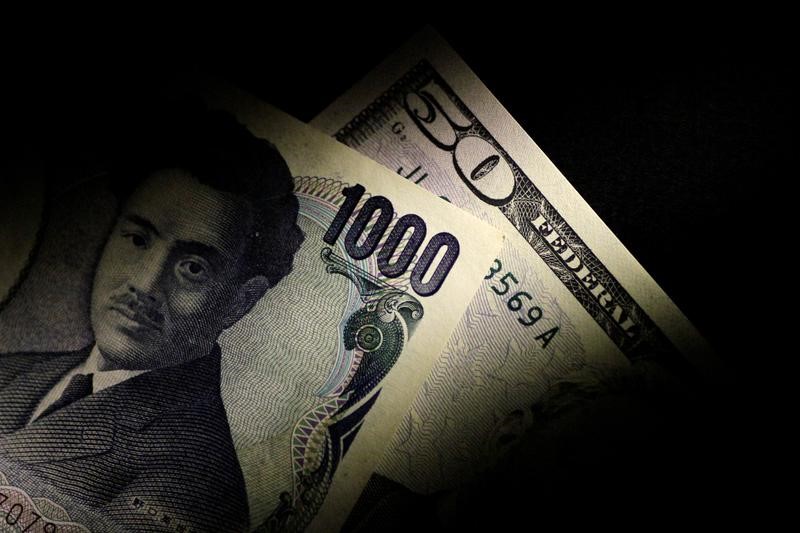
Investing.com – Trading in the Japanese yen has been volatile this week, prompting speculation that authorities have intervened to try to stem its seemingly steady decline. This is how we can validate the intervention.
At 11:15 ET (1515 GMT), the pair was trading 0.7% higher at 157.37 yen after rising as high as 160.245 yen on Monday before reversing sharply.
The pair’s sharp downward move, equating to buying the yen, gave rise to rumors that the Japanese authorities had finally decided that the yen sales had gone too far and were going to support the beleaguered currency.
A weak yen increases the cost of imports, and Japan is heavily dependent on imports for both energy and food, meaning inflation could rise.
The yen has fallen for years as global interest rates rose sharply in response to resurgent inflation while they remained near zero in Japan.
That gap sent money out of the yen and into other higher-yielding currencies, and even in March, when Japan raised rates for the first time since 2007, the yen was still falling.
Weakening expectations for U.S. rate cuts also contributed to the fall of the yen, which has lost more than a third of its value against the dollar since the start of 2021, prompting Japanese intervention in late 2022.
Top foreign exchange diplomat Masato Kanda declined to say whether the Ministry of Finance (MoF) was behind the yen’s sharp rise, but he said Japan was prepared to deal with currency issues around the clock.
remove advertising
.
However, the central bank’s money market forecasts suggest its spending may have been close to a daily record of 5.62 trillion yen – nearly $36 billion at current exchange rates – when Japan intervened in October 2022.
This could be confirmed in early May when the Treasury reveals the composition of its official reserves at the end of April, which will show the size of total reserve assets and the balance of deposits, securities and other assets.
The Treasury will reveal the monthly intervention size for the period from April 26 to May 29 at the end of May, Bank of America Securities said, and that is when we will know the exact size of the Treasury’s foreign exchange intervention on April 29.
Daily foreign exchange intervention data for the second quarter of 2024 is due to be published in early August.
However, as the yen fell during Tuesday’s session, Japanese authorities may have to continue to intervene given global pressure on the yen.
Of Japan’s $1.3 trillion in foreign exchange reserves, the Bank of England estimates $327 billion is held in deposits and short-term securities with maturities of up to one year.
“We believe the Treasury’s overall FX intervention this year will not exceed this figure unless the USD/JPY rally exceeds 170 yen,” the bank’s analysts said in a note dated April 30.
“The Treasury Department would not be willing to sell long-term U.S. Treasuries from a monetary diplomacy perspective. He may not want reserves to fall below $1 trillion due to the psychological impact on the market. However, they are admittedly subjective and arbitrary.”
remove advertising
.


